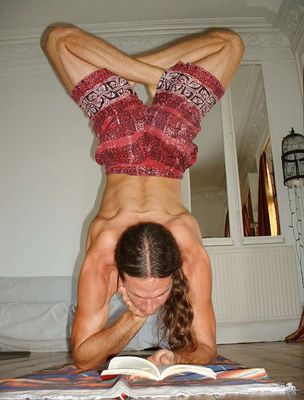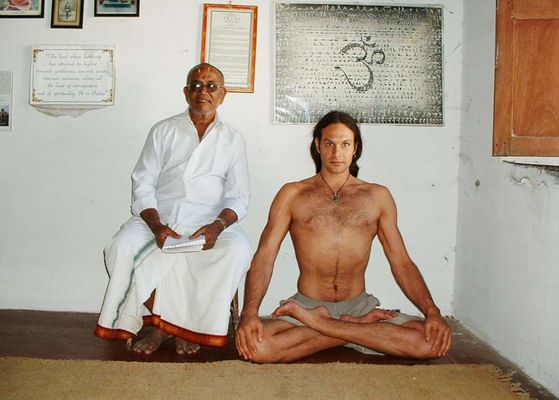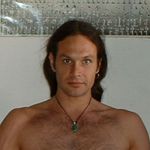
Mysore Special Week: Andrew is teaching with Ronald and Melanie in the AYI Ulm from 13 to 16 September 2016.
Further information and registration per e-mail to Melanie.
Sabine: Andrew, you were quite young when you started practicing yoga. Did you start with Asthanga Yoga right away or did you practise any other forms first/in addition to Ashtanga? How did it feel practising with your father – especially at an age when a lot of other kids probably have anything on their mind but getting onto the mat with one of their parents?
Andrew: I was 14 years old when I started practicing Ashtanga Yoga. I had no other exposure to yoga than Ashtanga Vinyasa and Primary Series. I owe my entrance into the practice entirely to my father. Cliff Barber is a little known ascetic and an old friend of my father’s. He taught us Primary Series in 1985.
My father and I always had a close relationship and we were used to running together each morning before we began learning yoga. Somehow he impressed on me that discipline was a kind of power. He inspired me to believe that it was cool to be disciplined. There was never any pressure to do anything. I simply enjoyed spending the time with him. All my life I had watched him sitting at his candle and doing various things, including running. I wanted to be like him. And for sure I owe the consistency of my practice to him! At age 14 I certainly did not know the implications of what I was doing or that it would be a lifelong path for me. I just wanted to see if I could learn to levitate by doing lots of yoga!
Sabine: You seem to have progressed very quickly, mastering the 3rd series already at the age of 18 when you also went to Mysore to study with Sri K Pattabhi Jois. Can you tell us about your experiences there? Did you have to get used to the “Indian” style first or was the training comparable to what you’d done before in the US?
Andrew: When Cliff left us, I copied down a list of the 1st and 2nd series postures to work on. I misspelled and got many of them wrong. As a result, I began doing many of the 3rd series postures right away. I was looking at BKS Iyengar’s “Light on Yoga” to see what to do. At the time I thought they were difficult but I liked the challenge. When I went to Sri K. Pattabhi Jois in 1990 I was right at home with the sequence because it was all I knew. I spent 3 months with Pattabhi Jois and he took me about half way through the 3rd series. Despite some injuries, he really accelerated my practice and permanently opened my body in many ways.
He is merciful though, which I appreciated. He didn’t mind letting me modify postures that were injuring me and didn’t make me wait until I could do them perfectly. I progressed more quickly because of that. He also made fun of my ambition with the asanas and tried to direct me towards pranayama and meditation. Iyengar speaks good English and is always chanting slokas and then explaining them. That was the thing that won me over right away. His view of life and how yoga should be applied to one’s life is very articulate and always felt true to me.
Sabine: Do you think that Iyengar and Pattabhi attracted different kinds of students? If yes, what, in your eyes, are the main differences between the two “communities”?
Andrew: Yes, I think they do attract different students. The contribution of Sri K. Pattabhi Jois and his family is irrefutable! They are for sure the face of Ashtanga Yoga to the world. There is a reason for that. Pattabhi Jois was such a bright, magnanimous person, truly charismatic. He was a genius who made a bigger contribution to the Ashtanga Yoga we are doing today than anyone realizes. He simply got out there before anyone else. Considering that his English was never very developed, his ability to communicate the yoga was astounding. However, the yoga that comes from Mysore is not limited to a single family. It is a community of Sanskrit scholars and there are many people in Mysore who know about the asanas.
Iyengar never promoted his classes. He mostly taught Indian people. He simply taught whoever came to him and in fact rejects many students and kicks many out of his classes. He is very strict when it comes to interrupting or arguing with him. He can be really fierce if he thinks there is disrespect. Most western students can’t relate to the philosophy or the strict etiquette and are more interested in the asanas and learning from a famous teacher. Nothing is wrong with that. Those of us who have put in the time with BNS Iyengar have gotten something really beautiful from him that is difficult to express in words. His attitude is “If you want this yoga, then take all of it! Not just asana!”
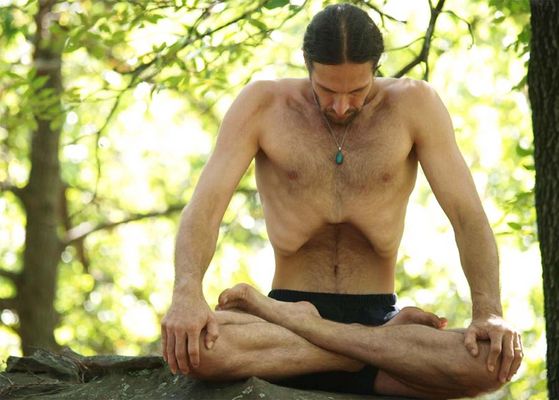
Sabine: Everybody practising Ashtanga Yoga has almost certainly heard the dictum “never changed anything” at some point (and maybe come to question it…). Seeing that you have returned to Mysore on a regular basis over a couple for years to study with Iyengar and can thus provide us with first-hand information: do you think that there has been some kind of change or development in his teaching?
Andrew: BNS Iyengar teaches exactly the same today as he did when I first met him. He enjoys doing led classes much of the time. He sticks to the Primary Series, but when it comes to Second Series his sequence is quite different. He is full of surprises. When he sees a student can do certain things well, sometimes he will give them other ideas or postures to work with. But he adheres strictly to his original framework. If he sees a bunch of variations in a student’s practice, he will either ignore them entirely and give no energy, or kick them out if he thinks it is disruptive. It becomes clear that he is teaching the sequences out of a broader base of asana knowledge and that there can be many things that he will suddenly remember and share if he is in the mood. He detests egoistical students and makes fun of them or kicks them out or both. This part is very consistent!
Sabine: Did those changes have an influence on your personal practice and/or approach?
Andrew: For me it was very liberating. The core of the practice is Surya Namaskara and the techniques expressed there are the glue that holds the whole thing together. That is Vinyasa and Vishesha Nyasa, careful, intentional placement. Seeing the differences in the two teachers and then realizing that among the western teachers there are always differences, I just relaxed about the whole subject. I do not like to confuse people about what Primary Series is. It creates a messy situation for other teachers. Instead I think it is better to inspire a spirit of cooperation and consideration in students. Then they understand how to support and fit into any yoga class. It is not difficult to accommodate slight variances in technique from one teacher to another. The “this is the one and only right way” idea is cumbersome and coupled with ego causes a lot of trouble. We all have different bodies with different needs.
When we come to a difficult area we are forced to innovate. There are more variations of yoga postures that anyone can possibly learn or remember. I try everything I come across. I use it when I need it. I firmly believe that knowing a foundational system and having a structure to work within is extremely beneficial, essential. Only by repeating the same thing over and over again can we truly integrate it into our bodies and nervous systems so that it becomes part of us. Only then it is truly perfect. It is much the same with learning music. A classically trained musician knows the scales. These are boring and difficult and frustrating at first perhaps. But when they are mastered they give great skill and a level of perfection that can be applied in any situation. I think it is the same with yoga. You can tell immediately who is trained well and who is just fooling around.
Sabine: At which point did you start teaching yourself? What’s your main focus, i.e. what is particularly important to you when working with students – and has this focus changed over the years?
Andrew: My own teaching evolved naturally. After a few years of practicing, my friends began asking me to teach them. I did the best I could with what I knew. I began teaching in living rooms and parks. Eventually I rented a space. After some time, I had a space all to myself, and put a sign up saying “Ashtanga Yoga Studio”. I am still teaching there today. Teaching for me is simply another stage of learning. My approach has changed a lot over time and continues to evolve as I learn more. I prefer to empower students to take personal responsibility for their own practice and encourage them to make their practice their own expanding, evolving process of healing and exploration. I see yoga as a tool for personal evolution and empowerment. The fixed sequences actually make this more possible when we relate to them correctly, in my opinion.
Sabine: You state that magic also plays a very important role for you. In how far does that also relate to yoga? Do magic and your engagement with this topic have any influence on your practice and your teaching or is it a separate aspect for you?
Andrew: Magic has always been a passion for me. I love the mystery in life. There is a very old connection with magic and yoga. I feel that illusion demonstrates very clearly how Samskara works in the mind. We are all subject to it. I use magic in my teaching to demonstrate this. The material world can be manipulated to create innumerable appearances. If we are convinced that we should believe everything we see, we are mistaken. We should look within for the truth. I have no magical powers other than the will to pursue an art form that I love. Magic and sleight of hand are totally unnecessary for learning yoga. Magic does express some of the truths of yogic philosophy for me though.
Sabine: To finish with, once more back to pure yoga: apparently you love both the structure and groundedness of Ashtanga Yoga resulting, amongst other things, from the repetition of movements. But you also strive for creativity and innovation. How do the two go together in your eyes and how would you describe your own style? Do you believe that this combination of tradition and innovation is the way to go to keep Ashtanga a vivid tradition in years to come?
Andrew: The people who created these sequences and approaches to asana practice were themselves innovative and creative. Not fixed in tradition, but movers and shakers and forward thinking visionaries. Pattabhi Jois called his establishment Ashtanga Yoga RESEARCH Institute, did he not? We are practicing modern yoga in a modern context. Perhaps the most modern thing about the yoga we are practicing is that it is available to anyone and everyone. Yoga has evolved over thousands of years and will continue to do so. Without a firm foundation, we lack the insight to see what is important. When we adhere too rigidly to structure we injure ourselves and inflict suffering on our students. There is a balance to be found. It all comes down to what we want from the yoga we are practicing.
People who are striving to achieve postures are comparing themselves to other people and seeking the approval and admiration of other people. When we practice to lift our spirits and brighten our own internal world, a very different view emerges. That is the idea I try to impart first and foremost. It is possible to be an incredible athlete and do many postures well and still be very unevolved in other areas of life and totally unhappy. I know from my own experience. Success in yoga should express itself in kindness to other people. It should be a source of happiness that is internal and does not depend on anyone else’s opinion or approval. It should not separate up from other people but should break down the barriers that keep us from connecting with our families, friends and communities. It should be expressed in a way that transcends culture, language, religious and political views. We are all in this journey together and we all need each other. Yoga is a great gift to humanity. That is my humble opinion.
And yes, the future of yoga in the world is bright indeed and will surely find its correct form. It already has. Everything is perfect just as it is. People approach yoga as they approach everything else. The kind of attitude “Yoga is yummy, yoga is fun! Let’s feed the senses, show off, and make as much money as possible while we pretend to be enlightened”, this is not in keeping with the true spirit of this yoga and the community of Mysore as a whole does not endorse it at all. The yoga of Mysore comes through a deep, deep Bhakti background and is based in loving service to humanity. Yoga is bigger than any of us and has its own agenda. We are all benefitting from these practices in ways that we are only beginning to understand. Personally, I am grateful and totally in awe of the influence yoga has had in my life and the lives of so many people all around the world. I feel no need to reproach anyone. Everything is just as it should be, and what the future holds will be very interesting indeed!
Sabine: Thank you so much for your time and sharing your ideas and experience!
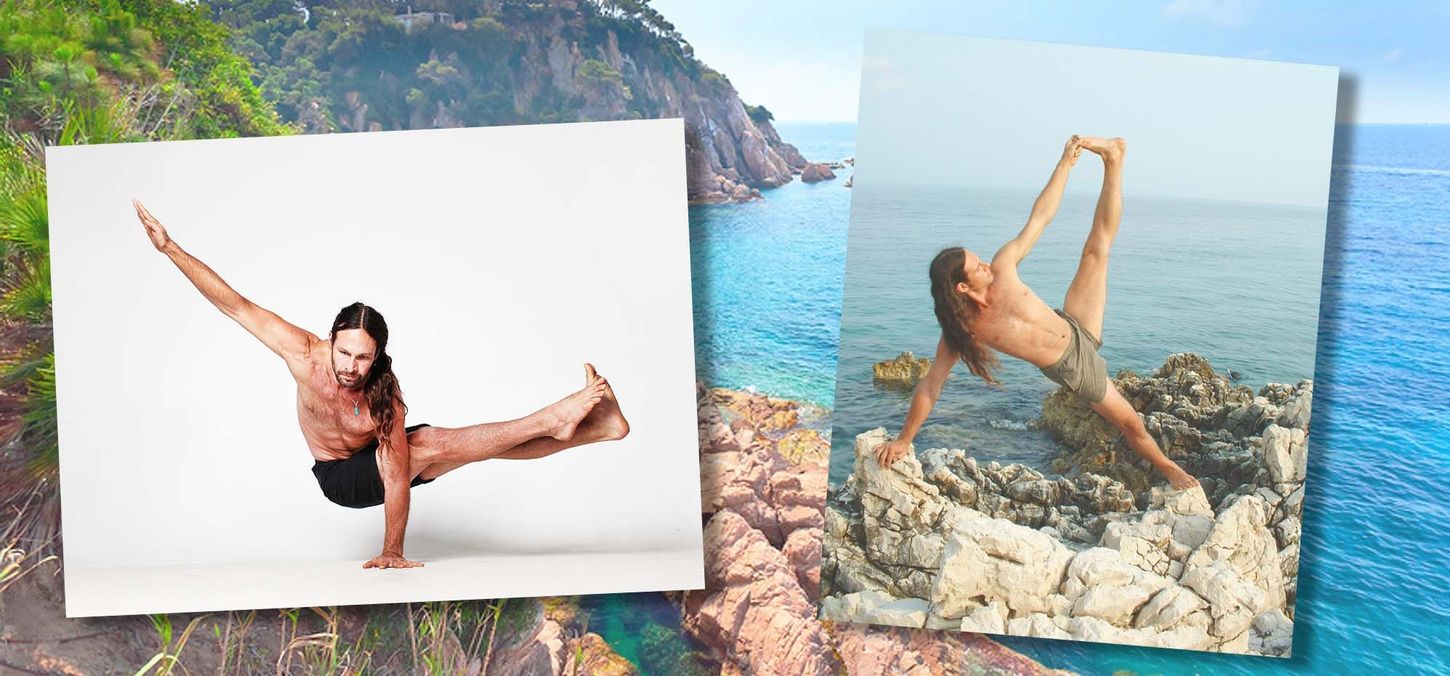

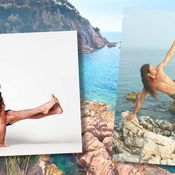
 Andrew Eppler
Andrew Eppler
 Dr. Sabine Nunius
Dr. Sabine Nunius
